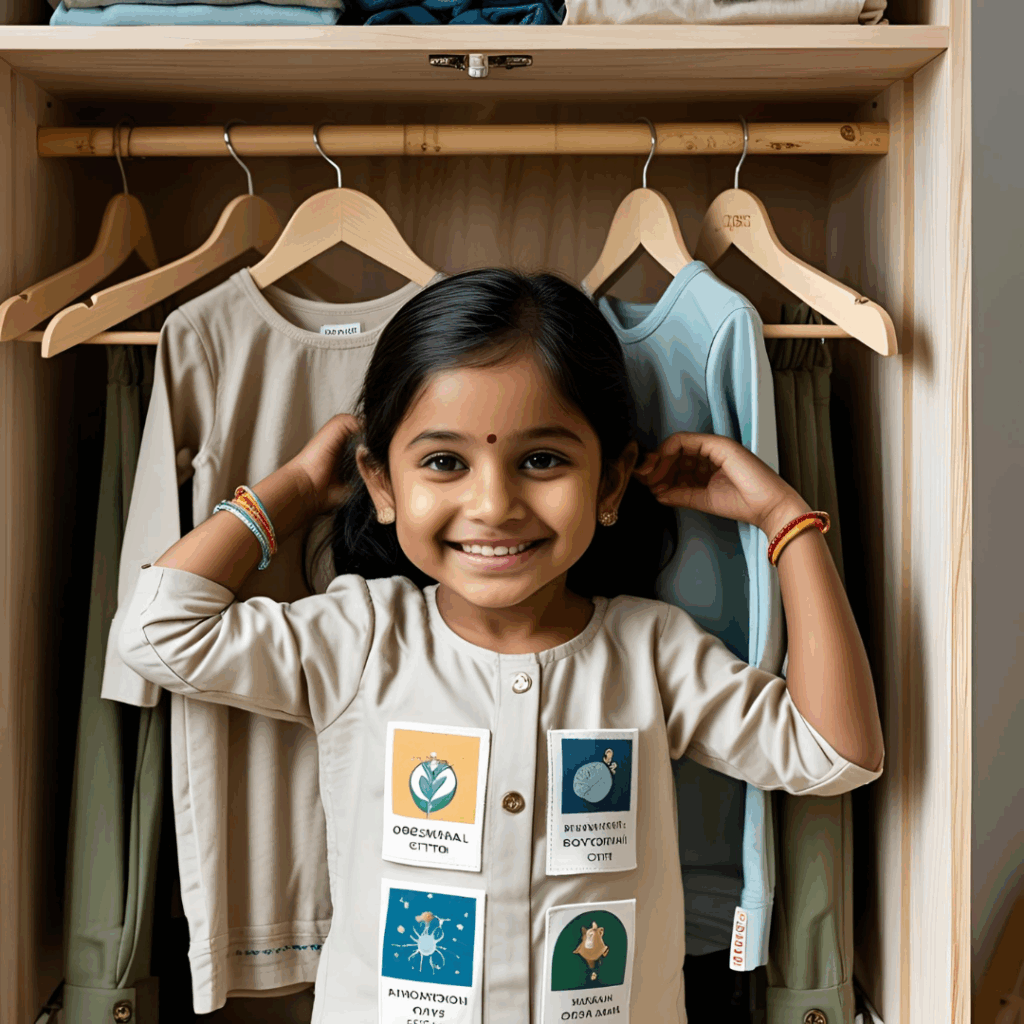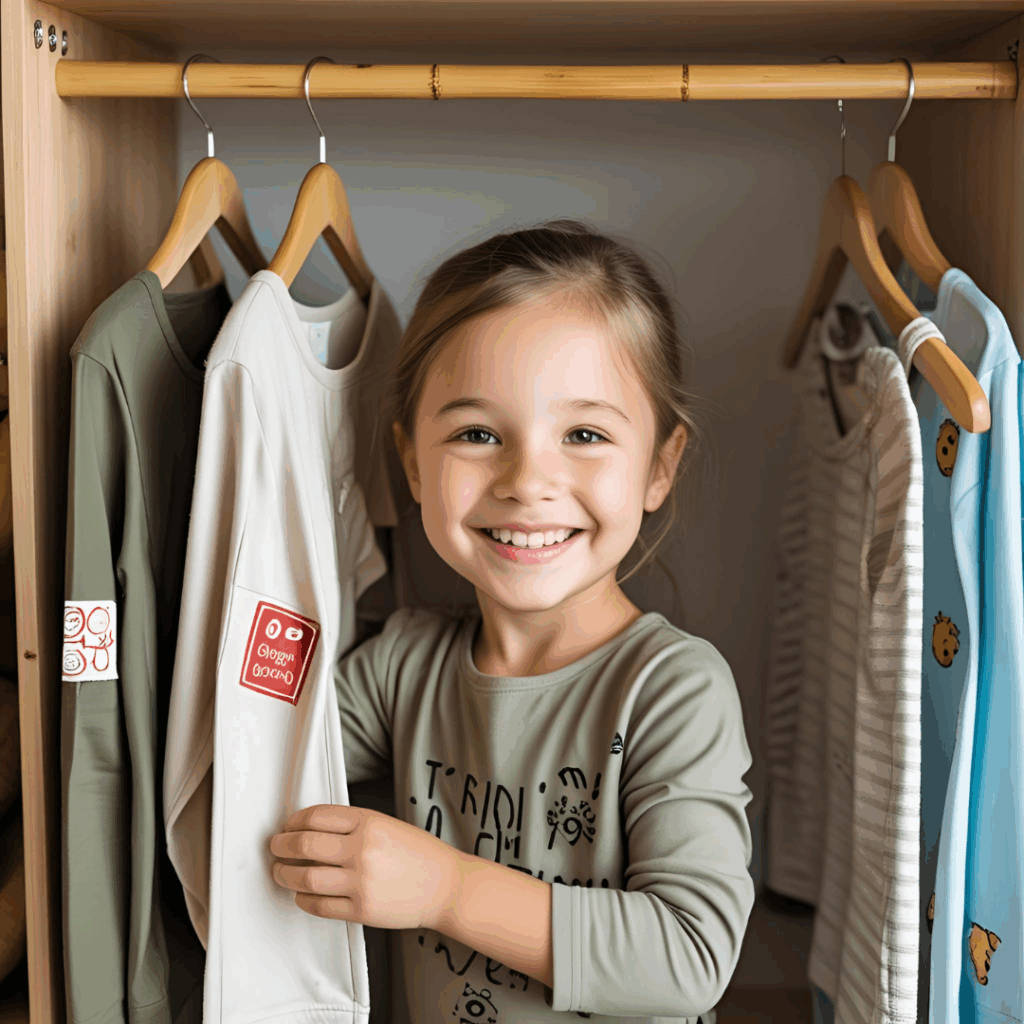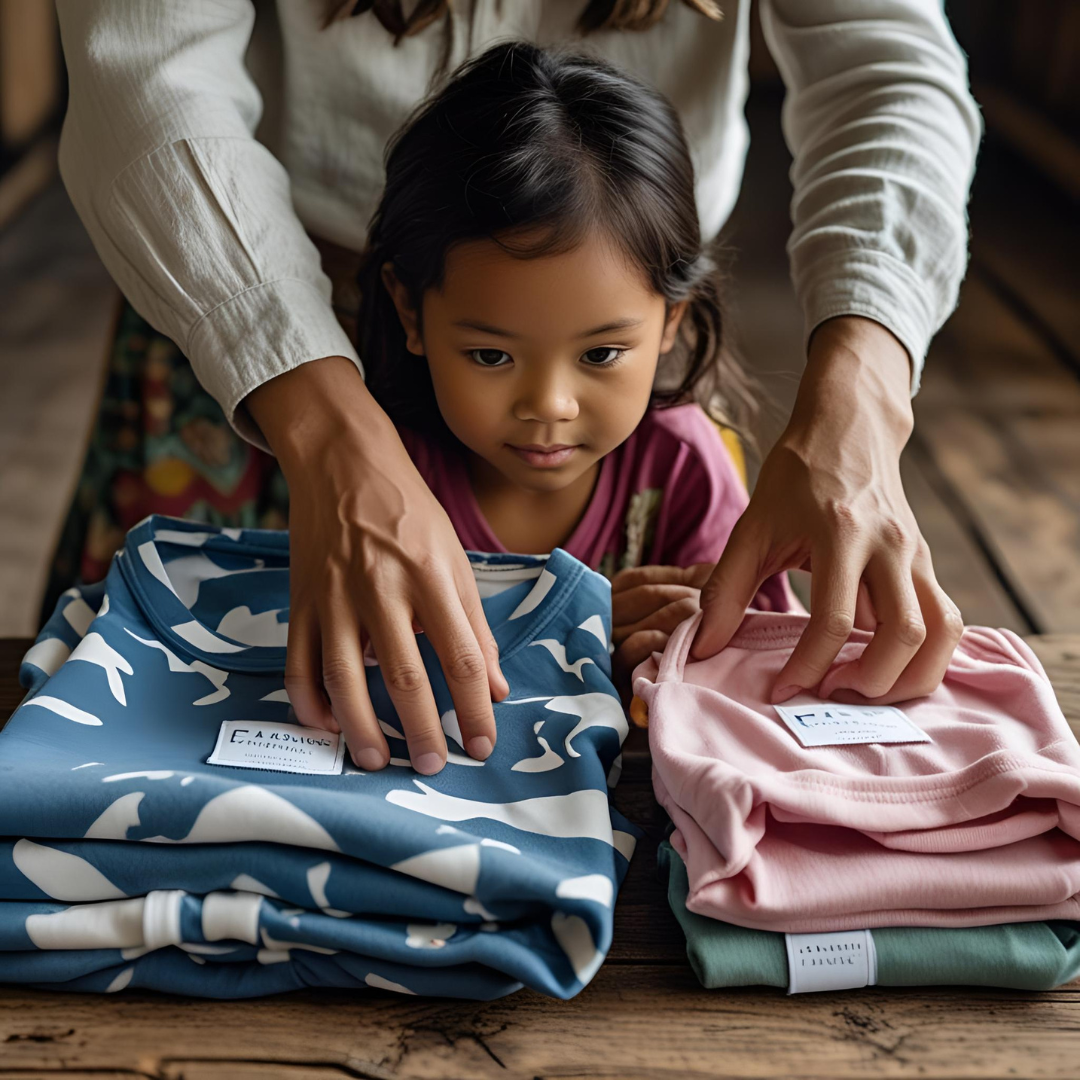Building your child’s wardrobe is one of the most enjoyable—and challenging—parts of parenting. After all, kids grow quickly, have their own preferences, and need comfortable, durable, and versatile clothes. But beyond all that, it’s entirely possible (and increasingly necessary) to create a children’s wardrobe with a focus on environmental and social consciousness.
In this comprehensive guide, you’ll learn how to build a mindful kids’ wardrobe by prioritizing ethical brands, sustainable fabrics, and smart consumption—while also teaching your child to care for the planet without giving up style, practicality, or even savings.
Why Choose a Conscious Children’s Wardrobe?
Before you dive in (or dive into the closet!), it’s worth understanding the real and impactful reasons behind this choice:
👣 Reducing Environmental Impact: Sadly, the fashion industry is one of the most polluting in the world. Choosing kids’ clothing made from organic, recycled, or biodegradable fabrics helps reduce your family’s ecological footprint.
🧵 Supporting Fair Labor: Choosing conscious brands means supporting companies that ensure fair working conditions and ethical production, far from exploitation.
🎨 Early Education: Children who grow up surrounded by responsible choices learn by observing and participating—growing into more mindful and respectful adults.
💰 Long-Term Savings: Higher-quality, purposeful pieces tend to last longer, which means they can be reused by siblings, cousins, or donated in great condition—saving money and reducing waste.

1. Prioritize Quality Over Quantity
A common mistake is filling the closet with cheap, short-lived clothes that quickly wear out and end up in the trash. To build a truly conscious wardrobe:
- Choose durable items with good finishes and reinforced seams.
- Opt for clothes that grow with the child, like pants with adjustable waistbands, bodysuits with extenders, or oversized T-shirts that last longer.
- Consider a kids’ capsule wardrobe: fewer items, more versatility and combinations.
2. Choose Sustainable and Natural Fabrics
Fabric choice makes all the difference—for your child’s health and the planet. Prioritize:
- Organic Cotton: Free of pesticides, gentle on sensitive skin, and doesn’t pollute soil or water.
- Linen and Hemp: Natural, biodegradable fibers that are durable and require little water and fewer pesticides.
- Recycled Fabrics: Made from PET bottles, textile scraps, or other waste—turning trash into treasure.
Whenever possible, avoid synthetic-based fabrics like polyester and nylon, which release microplastics when washed and have more polluting production processes.
3. Choose Brands with Purpose and Transparency
Not all cute clothes are conscious. Do your research and choose brands that show:
- Transparency across the entire production chain—from raw material to finished product.
- Recognized certifications like GOTS (Global Organic Textile Standard), Fair Trade, or B Corp.
- Social and environmental projects that make a real impact.
- Local and artisanal production, supporting your region’s workforce and reducing transport emissions.
💡 Tip: Small businesses, cooperatives, or local seamstresses often offer conscious pieces with incredible value.
4. Reuse, Swap, Donate, or Buy Second-Hand
Kids grow incredibly fast—no need to throw everything out. Adopt circular fashion principles:
- Kids’ Thrift Stores: Many physical and online stores offer curated selections of nearly-new items at affordable prices.
- Reversible or Multi-Functional Clothing: Like jackets that can be worn inside out or pieces that transform for extended use.
- Swap Markets: Join events or groups where families exchange clothes, toys, and unused items.
- Responsible Donation: Teach your child to sort and donate items they no longer wear, reinforcing values like empathy and generosity.


5. Choose Educational and Conscious-Themed Prints
Clothes send a message—and can teach too! Choose items that:
- Feature endangered animals, forests, natural landscapes, or messages about empathy and diversity.
- Spark curiosity in kids to ask about the designs and learn more.
- Include phrases or illustrations that promote care for the planet and biodiversity.
👕 Example: A T-shirt with a giant anteater and the phrase “With my curious snout, I discover a better world!” can spark valuable conversations about the importance of each species.
6. Involve Your Child in the Process
Building a conscious wardrobe is also a rich opportunity for learning and bonding. Try:
- Letting your child choose from sustainable options you’ve pre-selected.
- Talking about how clothes are made, where the materials come from, and why some choices are better for the planet.
- Turning it into a “challenge” to create different looks with just a few pieces, stimulating creativity.
- Teaching care habits: how to fold and store clothes, avoid unnecessary messes, and the importance of donating items they no longer use.
7. Don’t Forget Shoes and Accessories
Conscious choices shouldn’t stop at clothes. Pay attention to shoes and accessories too:
- Vegan Sneakers: Made without animal leather, ideally using recycled or plant-based materials in the soles and uppers.
- Backpacks: Look for models made with repurposed canvas, recycled PET, or other eco-friendly materials.
- Hats, Beanies, and Scarves: Choose handmade pieces from cooperatives or natural, ethical yarns.
8. Organize in a Practical and Functional Way
Fewer pieces = easier to organize! Some tips to streamline your routine and keep the wardrobe intentional:
- Use dividers by type (shirts, pants, socks) to optimize space.
- Keep frequently used items within your child’s reach to encourage autonomy and a sense of responsibility.
- Keep a donation box always accessible—when something no longer fits, it goes straight in.
- Rotate by season, storing out-of-use items and reusing what you can the following year or with another child.
Creating a mindful children’s wardrobe is a true act of love—for your child, for nature, and for the future we want to build. It’s not about perfection, but about making more intentional choices that reflect our values. With small everyday actions, we can raise little citizens who not only respect the planet but also understand the value of every item they wear.
✨ Why not start today? Take a look at your child’s wardrobe and see what conscious changes you can make right now. Then, share this guide with other families—after all, good choices are meant to multiply! 💚







